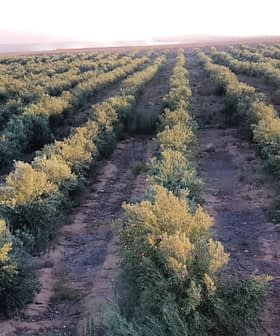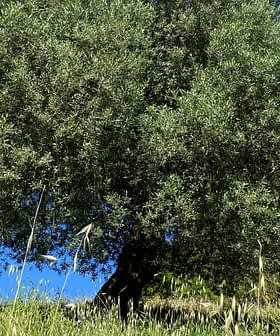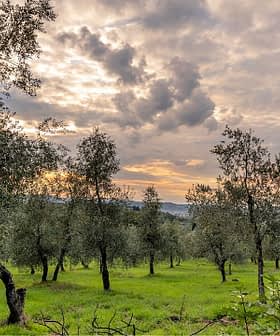
Production on a 5 ha organic olive farm in Italy’s Lecce province fell from 5,000 kg in 2011 to just 400 kg last year as a new strain of the plant pathogen Xylella fastidiosa (Xf) made its presence felt.
A report on an audit of the outbreak recently published by the European Commission said symptoms started appearing on the trees — most of them 200 – 300 years old — about two years ago and by March many were “virtually dead with only few shoots growing.”
That’s one vignette of the impact of the killer, which the report says was discovered in October after Italian plant health authorities investigated the cause of ‘quick decline syndrome of olive’ (QDSO) in Lecce, in the region of Puglia, since 2010. It was the first time the presence of Xf in the field had been confirmed in the EU.
According to the report, there is consensus a new strain (Salento strain) of Xf — genetically close to one present in Central America — is the culprit, together with some fungi and one insect. Infection has also been confirmed in other plants, namely oleander, almond and pink periwinkle.
Old trees more vulnerable
By early this year, Regional Plant Health Services in Italy estimated the suspected infected area at 8,000 ha with about 600,000 olive trees — many of them 200 – 500 years old — and a core of 1,000 ha with extremely high mortality.” Lecce province has olive production over about 92,500 ha, about 7% of the total Italian area.
Titled “Final report of an audit carried out in Italy from 10 to 14 February 2014 in order to evaluate the situation and official controls for Xylella fastidiosa,” and made public earlier in July, the report said QDSO is more prevalent in old trees, “and practically in every case, the associated fungi (mainly Phaeocremonium sp.) and… leopard moth (Zeuzera pyrina), are present besides Xf.” On younger trees (up to 20 years old, “only a few branches show symptoms if Xf is present.”
Risk of spread
Carried out by the Commission’s Food and Veterinary Office, the audit found the relevant authorities in Italy had taken significant steps since finding the new Xf strain in October, including putting conditions on the production and movement of plants for planting in nurseries in the province.
But it said an extensive survey to define infected and buffer zones was then still underway (due to be concluded by the end of March). Furthermore, no eradication or containment measures had been taken in the heavily Xf infected area of Gallipoli and the disease had spread very rapidly. “Diseased trees are left in place, acting as a reservoir of infection. Unless action is taken, further rapid spread of the disease must therefore be anticipated.”
The report also noted the risk of obtaining false negative results for the disease when using what is known as the ELISA test for other plant species and that the testing of dormant woody material (e.g. of grapevines) during winter may not be reliable. Such factors pose a potential risk of the germ’s spread in Italy and abroad. Also, key aspects regarding the new Xf strain remain to be clarified, such as its host range, factors promoting/inhibiting the infection and vectors involved, it said.
Among the report’s ten recommendations are that official controls cover every kind of movement of planting material out of Lecce province and that the customer list for olives and other high-risk plants traded from Lecce in previous seasons be given to those parts of Italy and the EU that received such material.
Xf also the cause of Pierce’s Disease in grapevines
At least four Xf subspecies are known, infecting different hosts. The Xf subspecies fastidiosa is found in grapevines (and known as Pierce’s Disease), as well as citrus, coffee and almond; subsp. sandy is found in oleander; subsp. multiplex in almond, peach, plum, oak, blueberry, pecan, etc.; and pauca is found in citrus and coffee.
Since February, a new regulation requires EU Member States to hold annual surveys for the presence of Xf in their territory and to report on their first one by the end of October.








